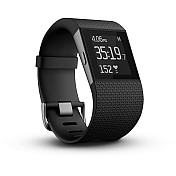MAKING WEARABLES WORKABLE & PREVENTING ABANDONMENT
A recurring theme during day two of Wearables TechCon has been the challenge of consumer adoption for new wearable products. Namely, what makes wearables really workable for the consumer? To answer that, we must first ask the consumer the question, “What do you want your wearable to do for you?”
In his keynote address, Dr. John Feland, Founder and CEO, Argus Insights—a market intelligence company connecting technology innovation and consumer adoption—addressed the “sock drawer problem”, when wearables fail the consumer, and ultimately end up collecting dust in a “sock drawer.”
To prevent use abandonment, the question must first be answered as to how wearables are failing consumers. In Dr. Feland’s words, “A (wearable) product launch and a rocket launch look a lot alike. You’ll know pretty quickly if it’s worked or not.”
The wearable goes through four phases in the consumer adoption process:
- Buying—The consumer is excited about the new product, based on the success of the product’s marketing.
- Learning—The first-time user experiences how easily they can interface with the product, and if it meets their expectation. How big is the learning curve?
- Using—The consumer tries out the new device to see how practical it is for their current lifestyle. Does it enhance what they’re already doing?
- Succeeding—Success occurs if phases one through three have worked for the consumer.
One of the biggest barriers of entry for the consumer is just after the point of purchase, with something as simple as ease of powering on the device and understanding how it functions. If device use isn’t set up to cater to the customer, there will be little “stickiness” factor.
When designing the next generation of devices, keep in mind these things
- What you accomplish in the “first 15 minutes” with the customer will determine if they continue to learn more about your product
- People won’t change their habits of behavior to fit the wearable. The knowledge needs to fit the user, not the other way around.
- Disruptive innovation can be bad for consumers, if they can’t get past the disruption.
Dr. Feland believes wearables that will be adopted on a broad consumer level will be designed both for usage and for multiple physical environments; will have adequately addressed usability issues such as those encountered with swipe and gesture control; will better bring people into an experience they already understand and know how to navigate; and will be habit forming in an organic way.
Matthew Goldman, Co-Founder and CEO, Wallaby Financial, who leads product development for the company’s wearable portfolio, indicated in his session on workable wearables, that there are three major landmarks to be met for future wearables:
- The need for better hardware that is very small, extremely powerful and simultaneously power efficient.
- Better software development with vital case uses
- A killer app—One that becomes a consumer’s must have, go-to, life influencing app.
When Goldman asked the audience for their ideas on primary needs still present in the app market, the two main schools of thought were the need for authentication, in terms of security and data share; and increasing appropriation of data for medical uses, particularly with baby boomers.
